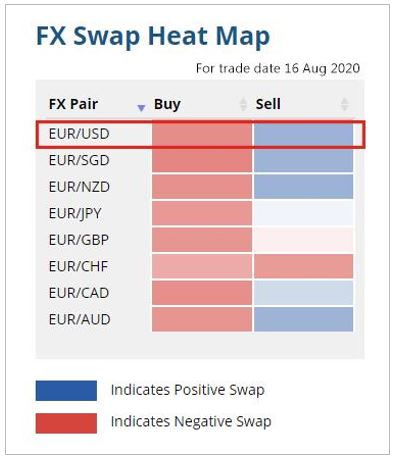
AT&T, despite its huge debt load, is still a solid dividend stock - and the recent 7.7% cut in dividend isn’t a sign to be in trouble. AT&T's 58% payout percentage means that it can cut its dividend. AT&T focuses on paying down its enormous debt load. It was piled up after it bought Time Warner Cable and DirecTV for $67billion in 2015, and $85.4billion in 2018.
AT&T
AT&T's historic dividend cut will allow shareholders to purchase the company at a lower price. The company is on track to achieve earnings per share of 26 cents to 28 cents, a cut of 40%. The dividend cut can be monetized and the cost of entry to the company will be lower. The next step is to wait for a trend confirmation, and execute your plan. The stock remains bullish.
NGL Energy Partners
Investors can view NGL Energy Partners' website for information about whether they will cut their dividend in near future. NGL Energy Partners LP issues dividends annually and on an interim basis. The company's website contains information on dividend yields and recent dividend declarations. The dividend rate was 0.00%. The company's headquarters is in Tulsa Oklahoma. You can find out more about the history of the company by visiting its website.

AT&T's spin-off
After its $85 billion acquisition of Time Warner, AT&T CEO John Stankey has explained why the company is considering a spin-off of its telecommunications business. Stankey says that even though the stock price was lower, splitting up the company's stock would increase shareholder value. AT&T will concentrate on a high-end 5G service. This is extremely costly. The company will spend $20 billion this year on capital expenditures. In addition, the company plans invest in fiber to-the-home broadband internet service and expand its 5G network.
AT&T has cut its dividend
After the hefty dividend cut, AT&T is facing a very difficult situation. The company is currently restructuring its position as a fast-moving, internet and wireless player. AT&T's quarterly distribution was reduced 83% in order to maintain the company's financial viability. Meanwhile, the company said that its fourth quarter revenue would fall short of expectations. This could help AT&T reduce its debt and reposition itself in the market as a player that is "fast-growing".
AT&T's cash flow is free
On November 1, AT&T Inc. stockholders will receive US$0.52 per share. The company has a lower free cash flow payout rate than the safe payout, and the dividend was cut by nearly 40 percent. However, despite its lack of profitability, AT&T is well-capitalized and has plenty of cash to reinvest. While a traditional profit ratio is a useful gauge of a company's health, cash flows are much more useful in determining the right balance between profitability and cash flow.
The date of ex-dividend
A company will announce the dividend amount and ex-dividend date when it declares it. Companies usually keep a regular schedule for announcing the declaration of dividends, and they often announce changes to the amount of the dividend in separate press releases or earnings announcements. In some cases, the date of a dividend cut or increase may be more significant for foreign companies, which usually pay out dividends based on a consistent percentage of profits.

The impact of a dividend cut on a company's stock price
Before taking on a position, investors need to consider the company's long term strategy before cutting dividends. If the dividend cut was made public on a conference telephone call, the stock price will fall more than nine month later. This selloff was due to speculation. However, if the cut to the dividend was made on an official website, it may have an adverse effect on the overall trend. In the case FULT, however, the stock price declined on the day of the announcement but continued its upward trend following the cut.
FAQ
What's the difference between a broker or a financial advisor?
Brokers are individuals who help people and businesses to buy and sell securities and other forms. They handle all paperwork.
Financial advisors are experts in the field of personal finances. They are experts in helping clients plan for retirement, prepare and meet financial goals.
Banks, insurance companies or other institutions might employ financial advisors. You can also find them working independently as professionals who charge a fee.
Consider taking courses in marketing, accounting, or finance to begin a career as a financial advisor. Also, you'll need to learn about different types of investments.
How can I find a great investment company?
Look for one that charges competitive fees, offers high-quality management and has a diverse portfolio. Fees are typically charged based on the type of security held in your account. Some companies charge nothing for holding cash while others charge an annual flat fee, regardless of the amount you deposit. Others may charge a percentage or your entire assets.
It is also important to find out their performance history. A company with a poor track record may not be suitable for your needs. Companies with low net asset values (NAVs) or extremely volatile NAVs should be avoided.
It is also important to examine their investment philosophy. To achieve higher returns, an investment firm should be willing and able to take risks. If they are not willing to take on risks, they might not be able achieve your expectations.
What are the pros of investing through a Mutual Fund?
-
Low cost - buying shares directly from a company is expensive. It's cheaper to purchase shares through a mutual trust.
-
Diversification - Most mutual funds include a range of securities. The value of one security type will drop, while the value of others will rise.
-
Professional management - professional managers make sure that the fund invests only in those securities that are appropriate for its objectives.
-
Liquidity - mutual funds offer ready access to cash. You can withdraw your funds whenever you wish.
-
Tax efficiency – mutual funds are tax efficient. This means that you don't have capital gains or losses to worry about until you sell shares.
-
For buying or selling shares, there are no transaction costs and there are not any commissions.
-
Easy to use - mutual funds are easy to invest in. You only need a bank account, and some money.
-
Flexibility - you can change your holdings as often as possible without incurring additional fees.
-
Access to information - You can view the fund's performance and see its current status.
-
Investment advice – you can ask questions to the fund manager and get their answers.
-
Security - You know exactly what type of security you have.
-
You can take control of the fund's investment decisions.
-
Portfolio tracking allows you to track the performance of your portfolio over time.
-
Easy withdrawal: You can easily withdraw funds.
Disadvantages of investing through mutual funds:
-
Limited investment options - Not all possible investment opportunities are available in a mutual fund.
-
High expense ratio - Brokerage charges, administrative fees and operating expenses are some of the costs associated with owning shares in a mutual fund. These expenses will eat into your returns.
-
Lack of liquidity-Many mutual funds refuse to accept deposits. They must be bought using cash. This limits the amount of money you can invest.
-
Poor customer support - customers cannot complain to a single person about issues with mutual funds. Instead, you will need to deal with the administrators, brokers, salespeople and fund managers.
-
Risky - if the fund becomes insolvent, you could lose everything.
Statistics
- The S&P 500 has grown about 10.5% per year since its establishment in the 1920s. (investopedia.com)
- Even if you find talent for trading stocks, allocating more than 10% of your portfolio to an individual stock can expose your savings to too much volatility. (nerdwallet.com)
- For instance, an individual or entity that owns 100,000 shares of a company with one million outstanding shares would have a 10% ownership stake. (investopedia.com)
- Ratchet down that 10% if you don't yet have a healthy emergency fund and 10% to 15% of your income funneled into a retirement savings account. (nerdwallet.com)
External Links
How To
How to make a trading plan
A trading plan helps you manage your money effectively. It helps you understand your financial situation and goals.
Before you create a trading program, consider your goals. You might want to save money, earn income, or spend less. If you're saving money, you might decide to invest in shares or bonds. You could save some interest or purchase a home if you are earning it. You might also want to save money by going on vacation or buying yourself something nice.
Once you know your financial goals, you will need to figure out how much you can afford to start. It depends on where you live, and whether or not you have debts. Consider how much income you have each month or week. Income is what you get after taxes.
Next, make sure you have enough cash to cover your expenses. These expenses include bills, rent and food as well as travel costs. These all add up to your monthly expense.
You will need to calculate how much money you have left at the end each month. This is your net disposable income.
Now you've got everything you need to work out how to use your money most efficiently.
To get started with a basic trading strategy, you can download one from the Internet. Or ask someone who knows about investing to show you how to build one.
Here's an example spreadsheet that you can open with Microsoft Excel.
This shows all your income and spending so far. It also includes your current bank balance as well as your investment portfolio.
Here's another example. A financial planner has designed this one.
It shows you how to calculate the amount of risk you can afford to take.
Remember, you can't predict the future. Instead, you should be focusing on how to use your money today.